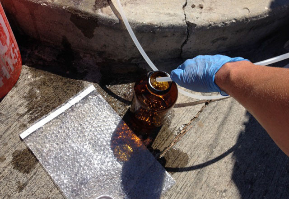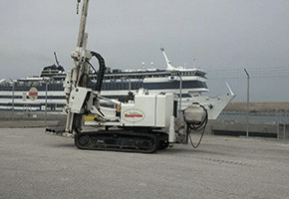Phase II Environmental Site Assessments
Changing the face of environmental consulting.
Driven by our people. Proven by your success.
Phase II Environmental Site Assessments
The purpose of a Phase II Subsurface investigation is to evaluate the Recognized Environmental Conditions (RECs) identified in the Phase I investigation in an effort to confirm or deny the presence of the RECs. EAC has become noted for its practical approach toward designing and implementing its Phase II ESAs, while still being in complete accordance with ASTM Standards as well as State, Federal and Local requirements.
EAC provides quick-turnaround, high-quality Phase II Environmental Subsurface Investigations, Comprehensive Site Assessments, and Baseline Site Assessments to provide critical environmental quality information for use in business decision making. EAC routinely provides these services to some of the nation's largest lenders and property owners for asset valuation and liability reduction. We are well versed in the federal, state and local regulations and understand the difference in impact between significant and minimal contamination issues. We consult directly with our clients to customize a scope of work that meets their specific needs (time, cost, accuracy) and risk tolerances to ensure that Recognized Environmental Conditions are addressed and investigated appropriately.
EAC’s Phase II Limited Subsurface Investigations evaluate identified Recognized Environmental Conditions (RECs) for the purpose of providing sufficient information to confirm the presence or absence of the REC, assist our clients in making informed business decisions about the property, and where applicable, provide knowledge necessary to satisfy the innocent purchaser defense under CERCLA. Our standard Phase II services are designed to meet the requirements of the ASTM E1903-11 : Standard Practice for Environmental Site Assessments.
Our sub-surface investigations can include (but are not limited to):
- Soil and groundwater sampling and analysis
- Sediment and surface water sampling and analysis
- Soil vapor and indoor air sampling and analysis
- Groundwater flow modeling
- Geophysical surveys
- Indoor-air vapor intrusion assessment
- Contaminant source differentiation
- Risk Characterization
- Sensitive receptor surveys

We are pleased to be able to offer our services under GSA Multiple Award Schedule Contract #GS-10F-181BA. NAICS Codes: #541330 - Engineering Services; #541620 - Environmental Consulting Services and #562910 - Remediation Services.
Navigation
Services
Office Locations
Deerfield Beach, FL
Charlotte, NC
Atlanta, GA
Tallahassee, FL
Sarasota, FL




